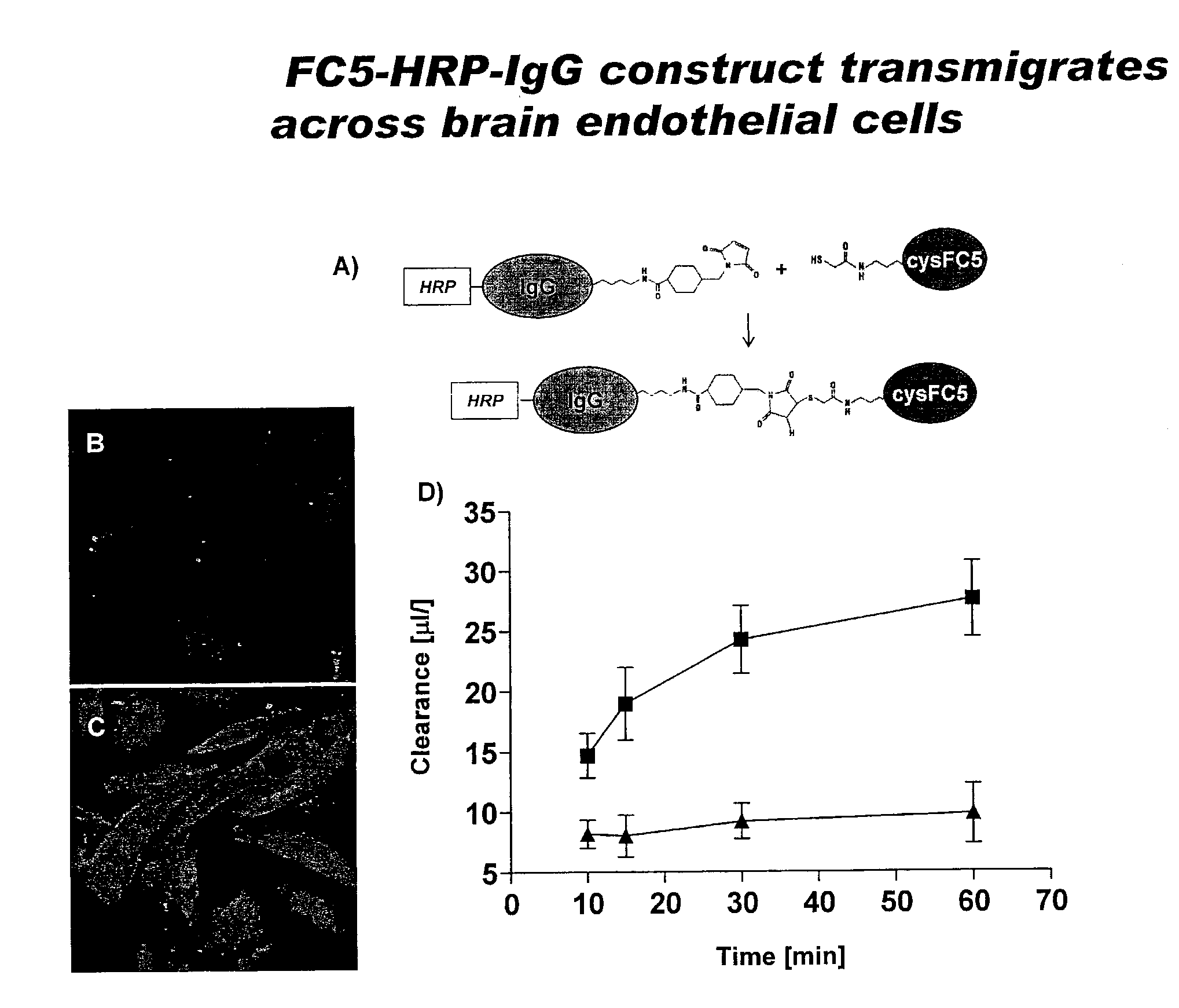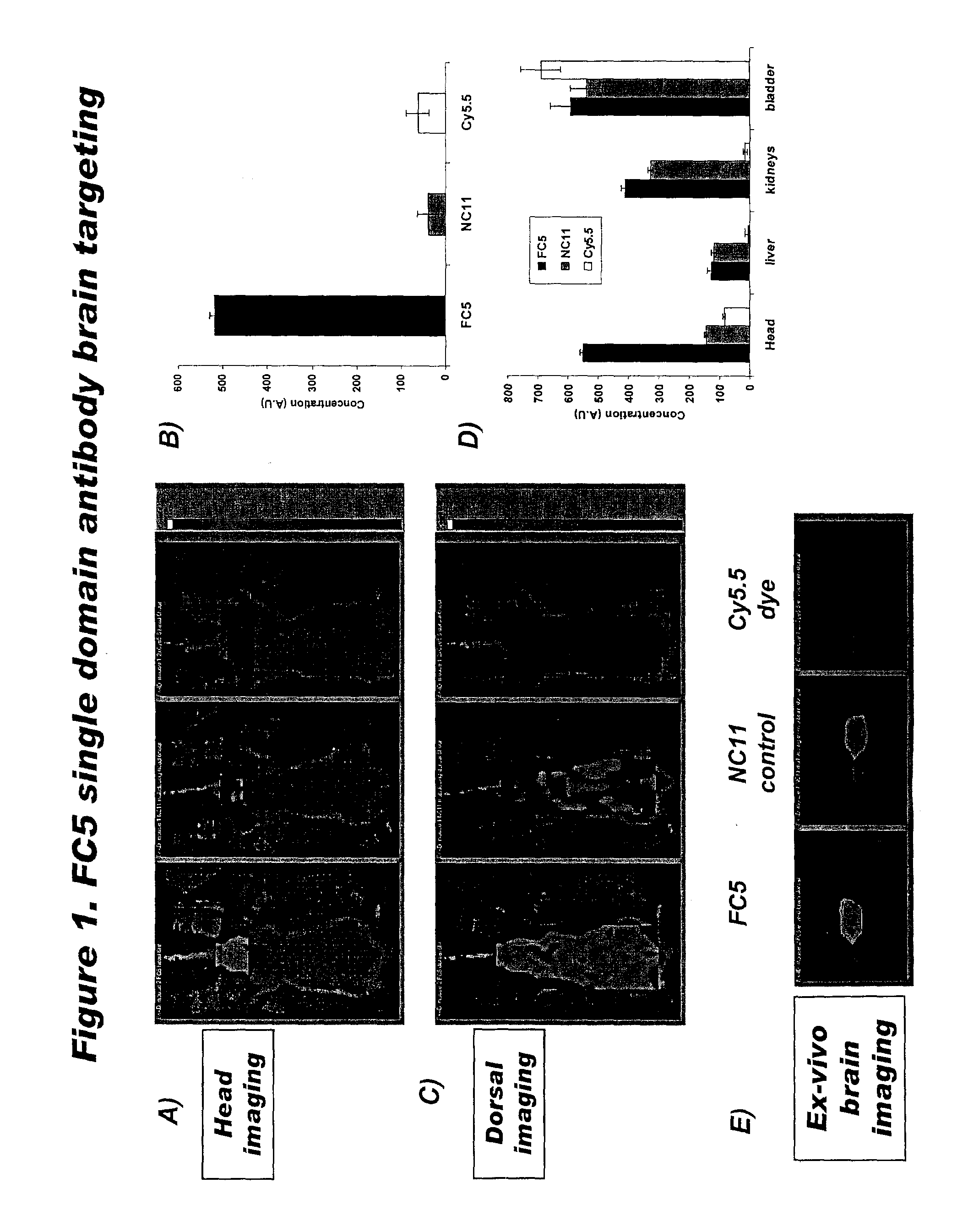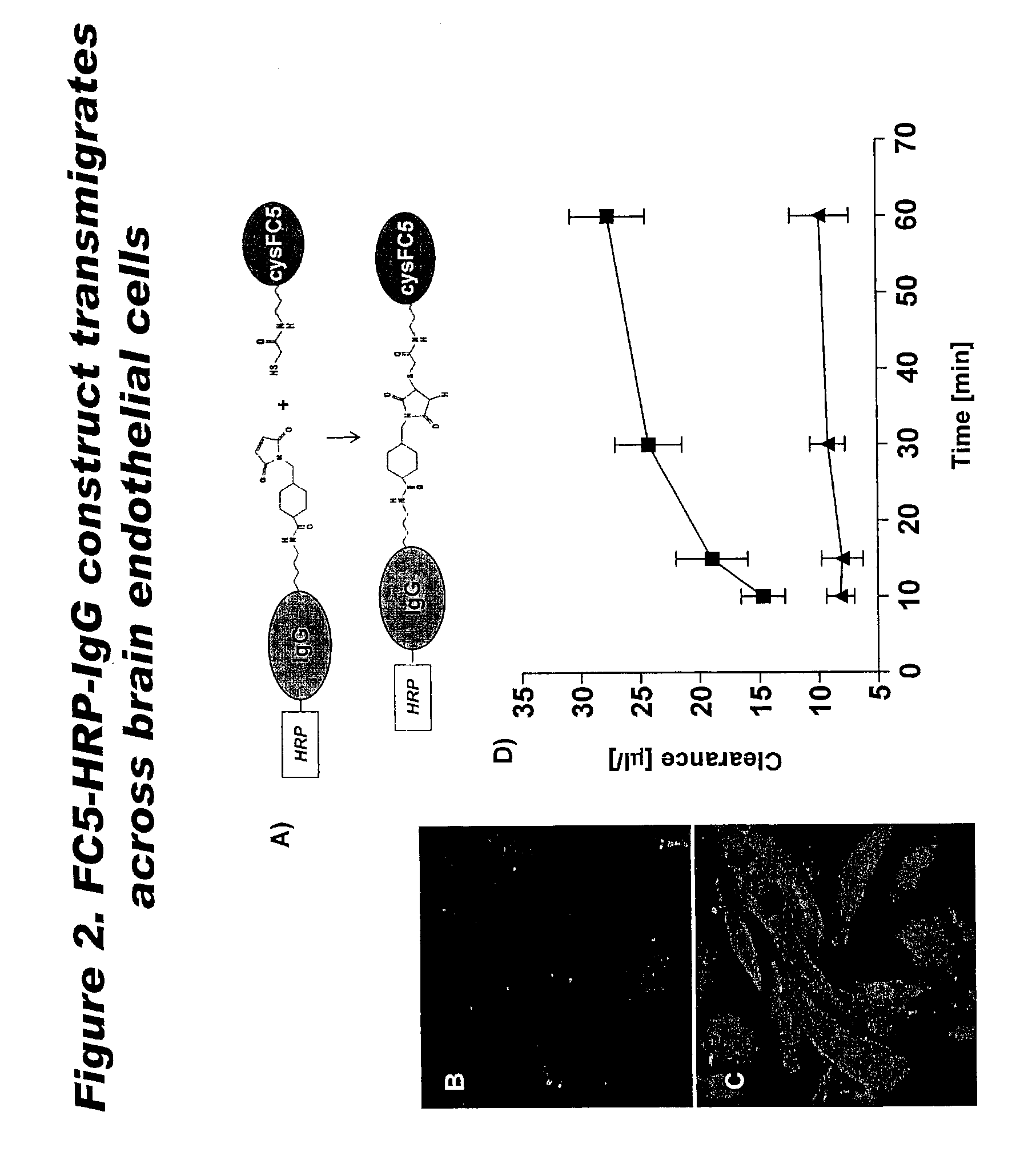Blood-brain barrier epitopes and uses thereof
a blood-brain barrier and epitope technology, applied in the field of blood-brain barrier epitopes, can solve the problem of limited brain selectivity achieved by using these ‘targets’
- Summary
- Abstract
- Description
- Claims
- Application Information
AI Technical Summary
Problems solved by technology
Method used
Image
Examples
example 1
FC5 ‘Targets’ the Brain after Intravenous Injection In Vivo
[0113]To investigate biodistribution of FC5, FC5 was conjugated with the near-infrared probe, Cy5.5, through NHS ester linkage and injected in mice intravenously via the tail vein. Mice were imaged by small animal time-domain eXplore Optix pre-clinical imager (GE Healthcare). Animals were either injected with the near-infrared fluorescent probe, Cy5.5 alone or conjugated to FC5 (50 μg) or negative control antibody NC11 (50 μg) via tail vein using a 0.5-ml insulin syringe with a 27-gauge fixed needle. Animals were then imaged in eXplore Optix 6 h after drug injection. In all imaging experiments, a 670-nm pulsed laser diode with a repetition frequency of 80 MHz and a time resolution of 250 ps light pulse was used for excitation. The fluorescence emission at 700 nm was collected by a highly sensitive time-correlated single photon counting system and detected through a fast photomultiplier tube offset by 3 mm for diffuse optical...
example 2
FC5 is Capable of Carrying ‘Cargo’ Molecules Across the Blood-Brain Barrier Endothelial Cells
[0115]Since sdAbs have no available —SH groups for conjugation with therapeutic moieties, FC5 was engineered to express an additional free cysteine. CysFC5 was then conjugated with mouse HRP-IgG (˜190 kDa) using maleimide activation reaction as shown in FIG. 2A. HRP-IgG or HRP-IgG-cysFC5 uptake into human CEC cultures was determined after exposing cells to either construct for 30 min. A significant cellular uptake of IgG-HRP was seen only when the molecule was linked to cysFC5 (FIGS. 2 B&C). Similarly, HRP-IgG linked to cysFC5 exhibited a significant transcellular migration to the abluminal chamber of the in vitro BBB model (FIG. 2D) while transport of IgG-HRP alone across human CEC monolayer was negligible (FIG. 2D).
[0116]It was demonstrated that only HRP-IgG ‘vectorized’ with FC5 entered human CEC and transmigrated across in vitro BBB, suggesting that sdAbs could successfully shuttle up to...
example 3
Mechanisms of FC5 Internalization and Transmigration Across Brain Endothelial Cells
FC5 Transmigration Across HCEC is Polarized and Charge-Independent
[0118]FC5 was not toxic to HCEC even at very high concentrations (1 mg / ml). The permeability of [14C]-sucrose across the in vitro BBB model was not significantly different in the absence or presence of 10 μg / ml FC5 [Pe=(0.897±0.11)×10−3 and (0.862±0.18)×10−3 cm / min, respectively], suggesting that FC5 does not affect the paracellular permeability of HCEC. Transcytosis of FC5 across the in vitro BBB model was polarized: 12-fold higher transport of FC5 from apical-to-basolateral than from basolateral-to-apical chamber was observed in only 30 minutes (FIG. 3A). In contrast, [14C]-sucrose, a marker for paracellular diffusion, exhibited expected equal (i.e., non-polarized) distribution from apical-to-basolateral and from basolateral-to-apical side of the cellular monolayer (FIG. 3A).
[0119]To investigate whether FC5 is internalized and transpo...
PUM
| Property | Measurement | Unit |
|---|---|---|
| concentrations | aaaaa | aaaaa |
| repetition frequency | aaaaa | aaaaa |
| power | aaaaa | aaaaa |
Abstract
Description
Claims
Application Information
 Login to View More
Login to View More - R&D
- Intellectual Property
- Life Sciences
- Materials
- Tech Scout
- Unparalleled Data Quality
- Higher Quality Content
- 60% Fewer Hallucinations
Browse by: Latest US Patents, China's latest patents, Technical Efficacy Thesaurus, Application Domain, Technology Topic, Popular Technical Reports.
© 2025 PatSnap. All rights reserved.Legal|Privacy policy|Modern Slavery Act Transparency Statement|Sitemap|About US| Contact US: help@patsnap.com



